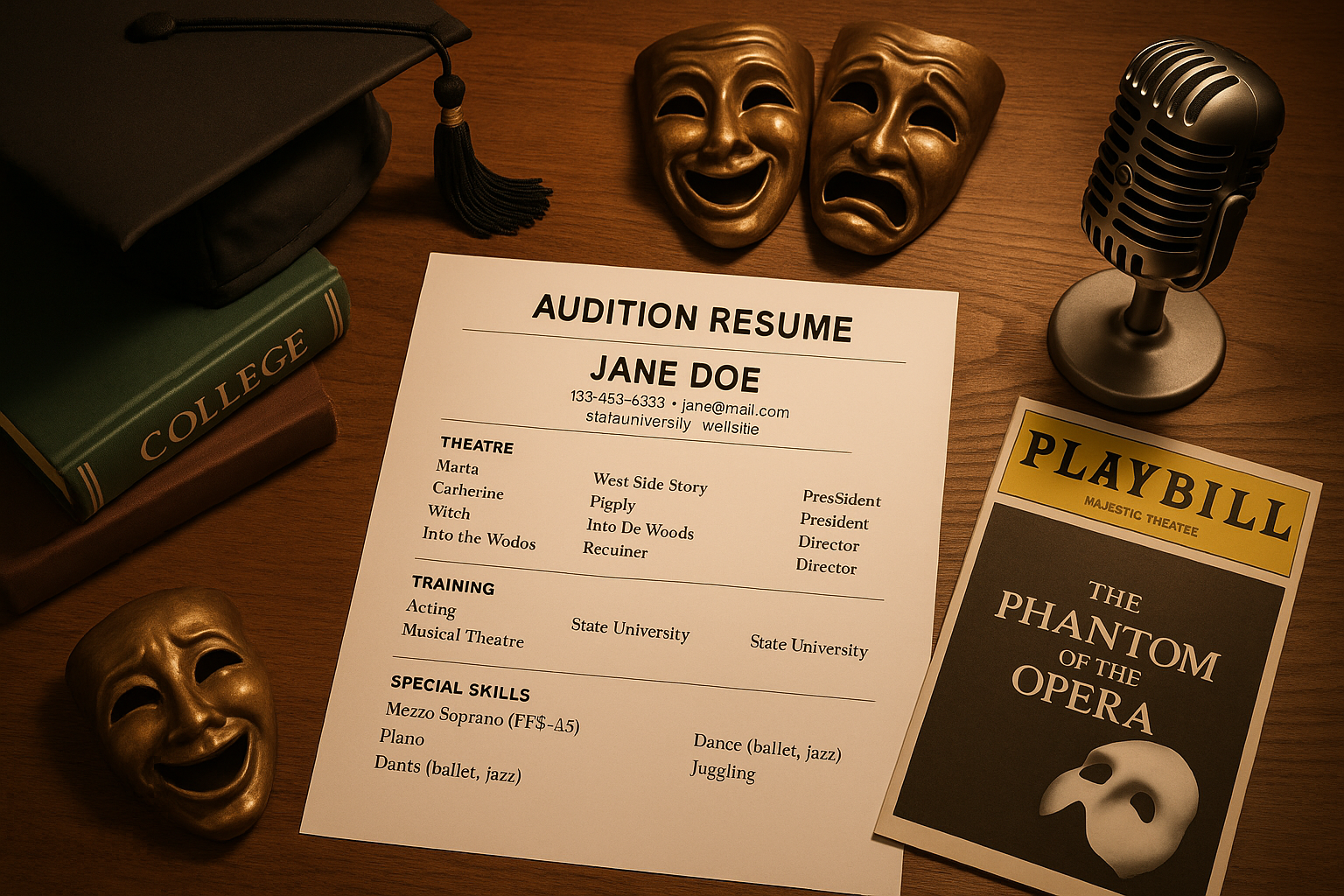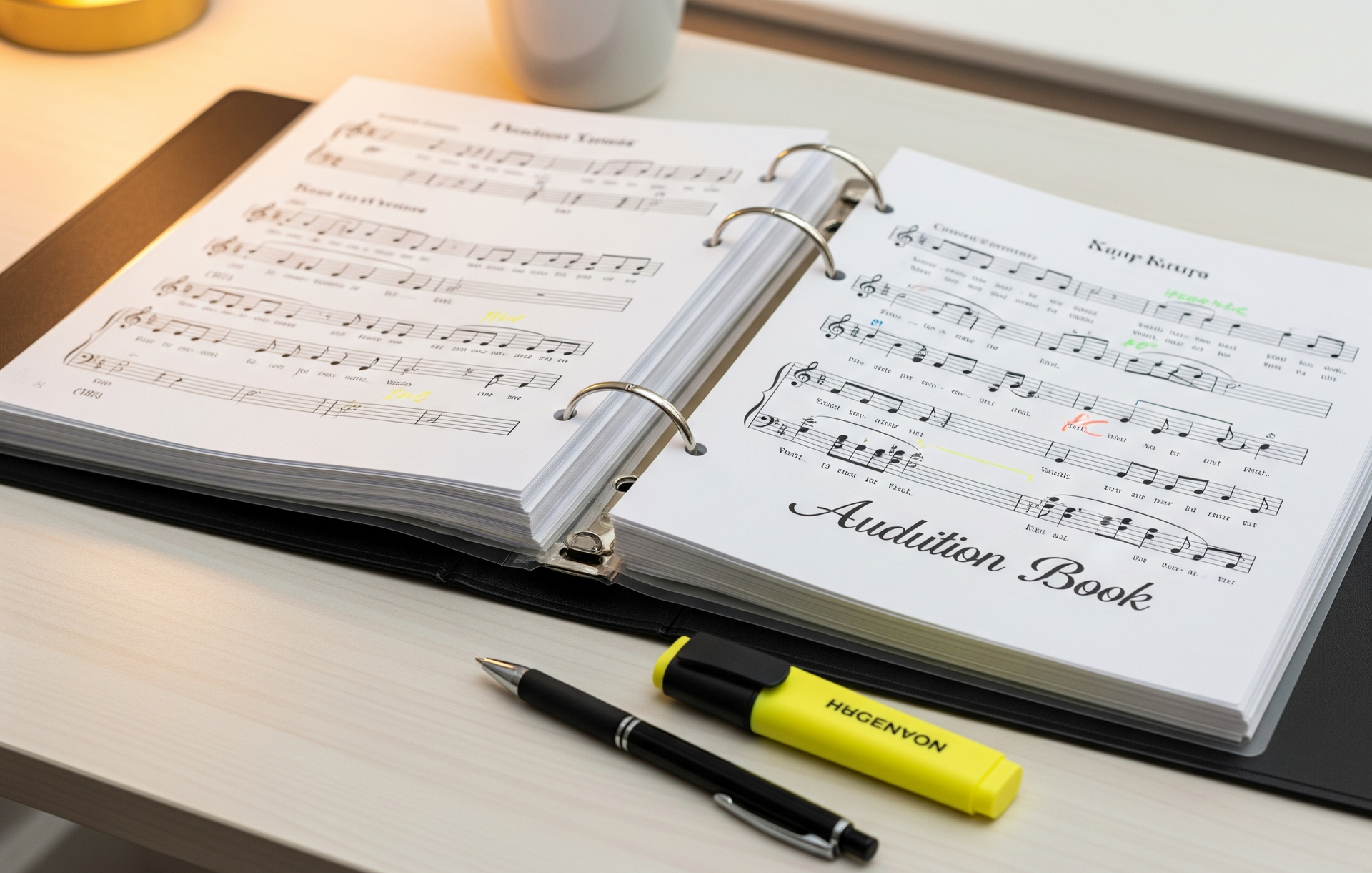Crafting Your Audition Resume:
Your Key to Standing Out in 2025 and Beyond
By Victor Lopez
At Lopez Studios Inc., we know that talent and passion are just two pieces of the puzzle when it comes to professional auditions. The third, and often overlooked, piece is your professional resume. In the competitive world of performing arts, your resume is your calling card, a concise, compelling document that can open doors to your next big opportunity.
With the industry constantly evolving, what's expected from a professional audition resume in 2025 and beyond? Let's dive into the essential elements and best practices to ensure your resume truly shines.
The Anatomy of a Stellar Audition Resume
Your resume isn't just a list; it's a strategic marketing tool. Here are the core sections every professional performing arts resume needs:
1. Contact Information (Top & Center):
- Your Professional Name (Stage Name if applicable)
- Phone Number
- Professional Email Address (e.g., jane.doe.actor@email.com, not a casual one)
- Professional Website/Portfolio URL (essential for reels, voice samples, and headshots)
- Union Affiliation (if applicable, e.g., AEA, SAG-AFTRA)
2. Performance Experience:
- This is the heart of your resume. List your roles in reverse chronological order (most recent first).
- For each entry, include:
- Production Title: (e.g., Hamilton, A Midsummer Night's Dream)
- Role: (e.g., Eliza Hamilton, Hermia, Sugar Plum Fairy)
- Company/Venue: (e.g., Broadway National Tour, Lopez Studios Inc.
- Director/Choreographer: (Optional, but good for significant productions
- Year/Run Dates: (e.g., 2023-2024, Fall 2024)
3. Training & Education:
- Formal education (Degrees, Diplomas, Certificates)
- Workshops, masterclasses, and specialized coaching (e.g., acting, vocal, dance, specific techniques)
- Instructors you've studied with (especially if they are well-known in the industry)
- Include the institution, program, and years attended.
4. Special Skills:
- This section can make you stand out! Be specific and honest.
- Languages: (Fluent, Conversational, Basic)
- Instruments: (Proficiency Level: Advanced, Intermediate, Basic)
- Dance Styles: (e.g., Ballet, Jazz, Tap, Hip Hop – clearly state your level for each)
- Athletics/Acrobatics: (e.g., Stage Combat, Tumbling, Yoga, Swimming)
- Unique Talents: (e.g., Juggling, Ventriloquism, Dialects/Accents, Horseback Riding, Driver's License)
- Avoid overly generic skills like "Good Listener" or "Hard Worker."
5. Awards & Recognition (Optional but Recommended):
- If you've received any notable awards, scholarships, or special recognition, include them here.
Formatting and Design: Making a Visual Impact
First impressions matter, and your resume's appearance speaks volumes about your professionalism.
- Conciseness is Key: One Page Rule! For most performers, your resume should never exceed one page. Directors and casting agents have limited time. Prioritize your most relevant and impressive experience.
- Readability: Use a clean, professional font (e.g., Sans-serif fonts like Arial, Calibri, or Inter are excellent choices) in a legible size (10-12pt for body, 14-18pt for your name).
- Whitespace: Don't overcrowd the page. Ample whitespace makes your resume easy to read and digest.
- Consistent Formatting: Use bolding, italics, and capitalization consistently to highlight key information (e.g., production titles, roles).
Headshots and Resumes: The Details That Matter in 2025+
For both Broadway and professional college auditions, the seamless integration of your headshot and resume is non-negotiable. Details matter now more than ever.
The Headshot: Your Visual First Impression
- Size & Type: The standard professional headshot is an 8x10 inch photograph. As of 2025, it is imperative that your headshot is in color. Black and white headshots are now considered outdated and unprofessional for modern auditions, as casting directors need to see your true appearance, including your hair, eye, and skin color.
- Physical Attachment (Hard Copies): For in-person auditions where you are asked to bring a physical copy, the standard practice is to staple your resume to the back of your 8x10 headshot. The resume should be printed on standard paper and trimmed to match the 8x10 photo size. Use a stapler and staple it securely in all four corners. Do not use paperclips, tape, or glue, as they can cause the documents to separate or damage the photo. The resume should be completely on the back, so that your headshot is what a casting director sees first.
Digital Submissions: The Modern Standard
With the majority of submissions now being digital, the rules have adapted. Your resume and headshot will be separate files, and proper file management is a sign of professionalism.
- The Headshot File: Your digital headshot should be a high-resolution, professional-quality file (typically a JPEG or PNG) that is a true representation of your current look. You will upload this as a separate file to online submission platforms.
- The Resume File: Your resume should be saved as a one-page PDF document. This is crucial because a PDF maintains its formatting regardless of the computer or software used to view it. A Word document or other file type can shift its layout, leading to a messy, unprofessional appearance.
- A Note on Integrated Headshots: While a physical headshot is attached to the back, for digital resumes, it is common and acceptable to include a small, professionally-cropped thumbnail of your headshot directly on the resume page, typically in the top corner. This helps casting directors quickly connect your name to your face when reviewing a large number of applications.
File Naming for Professionalism
A small detail that speaks volumes is how you name your files. For a professional, current look, always use a clear and consistent format.
- Resume File Name: [YourName]Resume.pdf (e.g., JaneMelodyResume.pdf)
- Headshot File Name: [YourName]Headshot.jpg (e.g., JaneMelodyHeadshot.jpg)
Common Resume Mistakes to Avoid
- Typos and Grammatical Errors: Proofread meticulously! Ask several people to review it.
- Exaggeration or Dishonesty: Never lie or significantly embellish your experience. It will catch up to you.
- Excessive Length: Stick to one page. If you have extensive experience, be selective.
- Irrelevant Information: Your resume should be focused solely on your performing arts career. Leave out unrelated jobs or hobbies unless they genuinely contribute to your special skills section (e.g., "Certified Yoga Instructor" if you're auditioning for a physically demanding role).
- Poor Quality Headshot: A blurry, unprofessional headshot detracts from an otherwise excellent resume. Invest in a good one.
Your audition resume is often the first impression you make. By following these guidelines and keeping it professional, concise, and up-to-date, you'll significantly increase your chances of getting noticed and called in for that dream audition.
Crafting a compelling audition resume is an art in itself, and at Lopez Studios Inc., we're dedicated to helping you master every aspect of your performing arts career. By investing time and attention into this vital document, you're not just listing credits – you're building a bridge to your professional aspirations. We encourage you to use these tips to create a resume that truly reflects your talent and dedication, setting you up for success in 2025 and beyond. Break a leg!
RELEVANT RESOURCES TO EXPLORE
Coming Soon!
SHARE THIS BLOG POST










